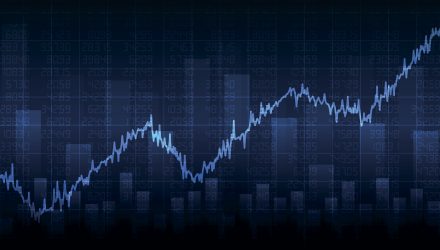With the page turned on the first quarter of 2019, it’s evident that more investors are becoming tactical with their capital allocation and to meet this demand, State Street Global Advisors announced the launch of two actively-managed, sector rotation SPDR ETFs–the SPDR SSGA US Sector Rotation ETF (XLSR) and SPDR SSGA Fixed Income Sector Rotation ETF (FISR).
Both ETFs feature tactical allocation strategies and are managed by the firm’s Investment Solutions Group (ISG). ISG is comprised of more than 75 strategists, analysts and portfolio managers overseeing more than $266 billion in assets for investors including the world’s leading central banks, sovereign wealth funds and pension funds.
“These two new active ETFs highlight three key qualities of State Street Global Advisors – the power of ISG’s sophisticated tactical asset allocation, the world’s largest and most liquid suite of equity sector ETFs, and our experience in managing over $400 billion in fixed income assets,” says Noel Archard, Global Head of SPDR Product at State Street Global Advisors. “In bringing these attributes to a wider audience through our SPDR ETF family, we are providing clients with alpha-seeking solutions to enhance core portfolios.”
Related: State Street Global Advisors Adapts in Ever Evolving ETF Industry
Rotating Sectors for Alpha Generation
The SPDR SSGA US Sector Rotation ETF seeks to provide capital appreciation by overweighting or underweighting S&P 500 Sector ETFs based on ISG’s sector return forecasts and research, which includes a proprietary, quantitative sector selection model. It’s a tried-and-true strategy that has allowed State Street Global Advisors to thrive and differentiate themselves in the ETF space.
“XLSR leverages our heritage as a leading sector provider,” said Matt Bartolini, Head of SPDR Americas Research at State Street Global Advisors. “We’ve developed a strong brand that respects not only our ETFs we offer through the traditional Global Industry Classification Standard (GICS) sector, but also the industry funds.”
For XLSR, ISG uses the model results derived and applies qualitative judgment to construct a portfolio of sector ETFs that seeks to maximize returns while meeting risk targets. XLSR gives investors the opportunity to utilize a much-needed sector rotation strategy to their core portfolio, especially given the volatility seen during the fourth quarter of 2018.
“This is one way for investors to do more for their core because of the high alpha generation potential within sector rotation,” said Bartolini.
Continued Innovation in Fixed Income
The SPDR SSGA Fixed Income Sector Rotation ETF seeks to provide total return by tactically allocating across income and yield-generating ETFs across the fixed income spectrum. FISR uses a tactical investment strategy based on ISG’s Fixed Income Sector Rotation Model, followed by fundamental review by the portfolio management team.
FISR speaks to the continuing innovation of ETFs, particularly when it comes to fixed income products. FISR leverages a model that provides views on the direction of rates and spreads across the maturity and credit quality spectrums.
Furthermore, when it comes to a fixed-income ETFs, Bartolini is quick to highlight the advantages of active management, such as proactively being able to utilize various portions of the yield curve based on the necessary qualitative-quantitative analysis.
“This really speaks to the evolving ecosystem of ETFs where you’re consistently having more products come to market dissect as well as reach broader parts of the global capital markets,” said Bartolini. “So the ability to trade ultra-short duration government bond ETFs while at the same time, find emerging market local debt that allows for tactical asset allocation models to be built.”
“Within fixed income, that’s actually one area where active management historically has proven to do well by rotating along the yield curve based on different term premiums as well as making that decision between rate and credit risk,” Bartolini added.
For more market trends, visit ETF Trends.
